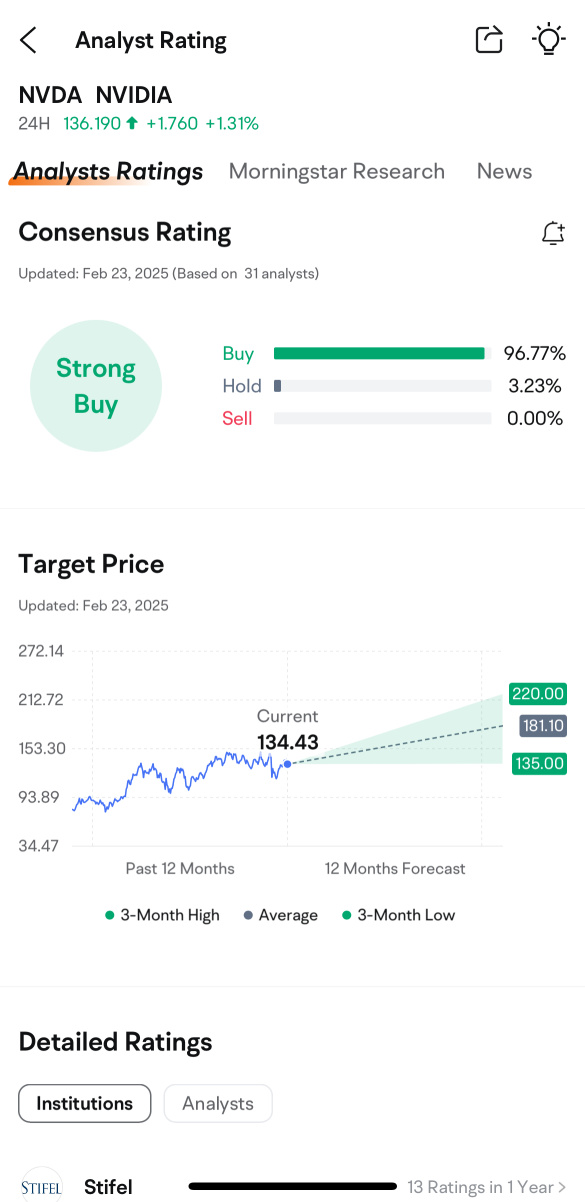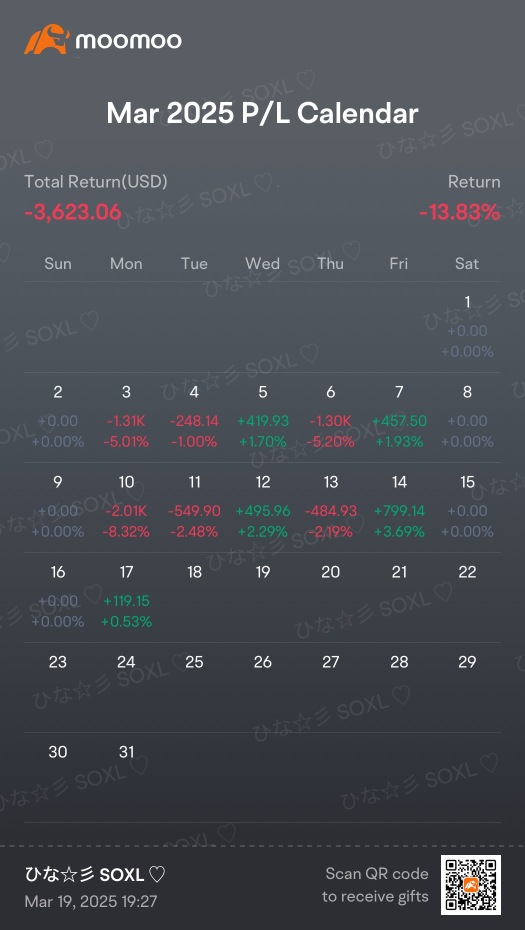小皮匠 10323
liked
$Nixxy (NIXX.US)$
In terms of universality, nixxy's business model represents a specific application of AI in particular fields, with its benefits being carved out from the interest groups of traditional recruitment methods. If we refer to the stock price of Boss Zhipin, which is also listed on Nasdaq in China, NIXXY has significant potential. This application can be independently provided to professionals in the human resources industry or can serve as an extension feature in mature Software. Therefore, in the business model, due to the improvement in tool efficiency and capability, there is a redistribution of profits in the original Industry, consistent with the profit distribution models of companies like Amazon, Alibaba, and JD.com.
In terms of universality, nixxy's business model represents a specific application of AI in particular fields, with its benefits being carved out from the interest groups of traditional recruitment methods. If we refer to the stock price of Boss Zhipin, which is also listed on Nasdaq in China, NIXXY has significant potential. This application can be independently provided to professionals in the human resources industry or can serve as an extension feature in mature Software. Therefore, in the business model, due to the improvement in tool efficiency and capability, there is a redistribution of profits in the original Industry, consistent with the profit distribution models of companies like Amazon, Alibaba, and JD.com.
Translated
1
1
小皮匠 10323
liked
$Nixxy (NIXX.US)$ 1.93 isn't that far away here!
2
$Nixxy (NIXX.US)$
Using AI to accelerate the recruitment process and using Big Data to filter candidates that match the positions has inherent potential. As AI advances, the company's Business will become more competitive, making this a valuable area of practical application for AI.
Using AI to accelerate the recruitment process and using Big Data to filter candidates that match the positions has inherent potential. As AI advances, the company's Business will become more competitive, making this a valuable area of practical application for AI.
Translated
1
小皮匠 10323
voted
Hi, mooers! 👋
The AI world holds its breath! $NVIDIA (NVDA.US)$ will release its Q4 FY2025 earnings on February 26, just before the market opens. As the AI kingpin faces heightened scrutiny amid market volatility, will it defy expectations again? This is your chance to earn rewards and gain insights by predicting the opening price. Let’s get into it! 🎉
Stay Ahead of the Game
Subscribe to @Moo Live for real-time updates, expert analysis, and t...
The AI world holds its breath! $NVIDIA (NVDA.US)$ will release its Q4 FY2025 earnings on February 26, just before the market opens. As the AI kingpin faces heightened scrutiny amid market volatility, will it defy expectations again? This is your chance to earn rewards and gain insights by predicting the opening price. Let’s get into it! 🎉
Stay Ahead of the Game
Subscribe to @Moo Live for real-time updates, expert analysis, and t...



645
1022
40
$Grab Holdings (GRAB.US)$ Recently, Singapore announced its budget proposal, estimating that each household of Singapore citizens will receive no less than 800 Singapore dollars in financial subsidies, equivalent to nearly 3 billion Singapore dollars being redistributed. As the absolute Block Orders for transportation and food delivery in Singapore, Grab's recent Earnings Call has seen growth alongside the increased financial capacity of the people.
Translated
1
小皮匠 10323
commented on
$Nixxy (NIXX.US)$ Nixxy Inc. (formerly known as Recruiter.com Group Inc.) is an online recruitment platform in the USA that primarily relies on AI technology and a virtual recruitment network to connect businesses with recruiters. Although it has only 4 full-time employees, it has integrated 28,000 independent recruitment companies to form a decentralized recruitment network. This model is similar to platform companies like Uber and Airbnb, which do not expand through heavy assets, but instead leverage technology and network effects to enhance recruitment efficiency.
1. Platform model:
The company does not directly employ a large number of recruiters, but rather integrates dispersed recruitment resources through AI technology to form a decentralized recruitment network.
The advantage of this model is low-cost expansion, which can quickly absorb both supply and demand in the market while providing automated matching services.
2. AI empowers recruitment:
The company's technology core is an AI-driven recruitment tool that can automatically match job seekers and employers through data analysis, improving recruitment efficiency.
This reduces human intervention in the traditional recruitment process, increases matching accuracy, and may offer greater cost advantages compared to traditional headhunting models.
3. Business Profit Model:
Saas Subscription Model: Enterprise clients may need to pay a subscription fee or purchase services as needed to access more accurate recruitment resources.
Commission: For each successful match of a job seeker, the platform may collect a fee from the recruiting company or employer...
1. Platform model:
The company does not directly employ a large number of recruiters, but rather integrates dispersed recruitment resources through AI technology to form a decentralized recruitment network.
The advantage of this model is low-cost expansion, which can quickly absorb both supply and demand in the market while providing automated matching services.
2. AI empowers recruitment:
The company's technology core is an AI-driven recruitment tool that can automatically match job seekers and employers through data analysis, improving recruitment efficiency.
This reduces human intervention in the traditional recruitment process, increases matching accuracy, and may offer greater cost advantages compared to traditional headhunting models.
3. Business Profit Model:
Saas Subscription Model: Enterprise clients may need to pay a subscription fee or purchase services as needed to access more accurate recruitment resources.
Commission: For each successful match of a job seeker, the platform may collect a fee from the recruiting company or employer...
Translated
7
1
$Bitcoin (BTC.CC)$
The main reasons for the stable prices in the Singapore market are:
Policy intervention and regulation:
The Singaporean government places high importance on the sustainability and stability of the market, especially in real estate and financial markets. It suppresses speculative activities through policy tools such as macro-prudential measures, tax regulation, trade restrictions, to avoid significant price fluctuations.
Market structure and demand characteristics:
Singapore's market size is relatively small, but the demand hierarchy is very clear. The supply and demand relationship is controlled by government planning, such as the purchase restrictions and housing price subsidies in the real estate market, which leads to prices leaning towards "slightly increasing in stability".
Long-term capital dominance:
Singapore has attracted a large number of long-term investors (sovereign wealth funds, pension funds, insurance companies, etc.), these capital are more concerned with long-term returns rather than short-term speculation, hence the market price fluctuations are relatively small.
Impact of the global economic environment:
As an open economy, Singapore's market stability is closely related to the global economic environment. In the absence of major external shocks, its market tends to exhibit a stable trend.
---
2. The key driving factors stimulating market sentiment.
The volatility of the Singapore market relies more on external or internal 'emotional stimuli' events. These events can be classified into the following categories:
External events:
1. Macroeconomic changes: such as the Federal Reserve interest rate decisions, adjustments in global economic growth expectations, which may impact capital inflows and asset pricing.
2. Geopolitical Events: such as trade conflicts within the region, deteriorating international relations...
The main reasons for the stable prices in the Singapore market are:
Policy intervention and regulation:
The Singaporean government places high importance on the sustainability and stability of the market, especially in real estate and financial markets. It suppresses speculative activities through policy tools such as macro-prudential measures, tax regulation, trade restrictions, to avoid significant price fluctuations.
Market structure and demand characteristics:
Singapore's market size is relatively small, but the demand hierarchy is very clear. The supply and demand relationship is controlled by government planning, such as the purchase restrictions and housing price subsidies in the real estate market, which leads to prices leaning towards "slightly increasing in stability".
Long-term capital dominance:
Singapore has attracted a large number of long-term investors (sovereign wealth funds, pension funds, insurance companies, etc.), these capital are more concerned with long-term returns rather than short-term speculation, hence the market price fluctuations are relatively small.
Impact of the global economic environment:
As an open economy, Singapore's market stability is closely related to the global economic environment. In the absence of major external shocks, its market tends to exhibit a stable trend.
---
2. The key driving factors stimulating market sentiment.
The volatility of the Singapore market relies more on external or internal 'emotional stimuli' events. These events can be classified into the following categories:
External events:
1. Macroeconomic changes: such as the Federal Reserve interest rate decisions, adjustments in global economic growth expectations, which may impact capital inflows and asset pricing.
2. Geopolitical Events: such as trade conflicts within the region, deteriorating international relations...
Translated
6



![[empty]](https://static.moomoo.com/node_futunn_nnq/assets/images/folder.5c37692712.png)
![[error]](https://static.moomoo.com/node_futunn_nnq/assets/images/no-network.991ae8055c.png)